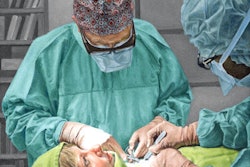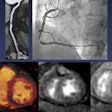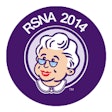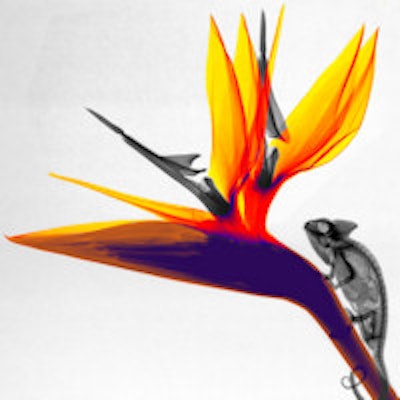
What happens if you combine x-rays, creatures large and small, and a diorama? You get a "biorama," as Dutch medical physicist and artist Arie van 't Riet, PhD, has termed his images. His artwork will be shown at the upcoming RSNA 2014 annual meeting in Chicago.
A medical physicist by trade, van 't Riet worked at the Radiotherapeutic Institute (RISO) and Deventer Hospital, both in Deventer, the Netherlands (he is now retired). His move into art began when a colleague asked him to scan an oil painting, something he'd never tried before.
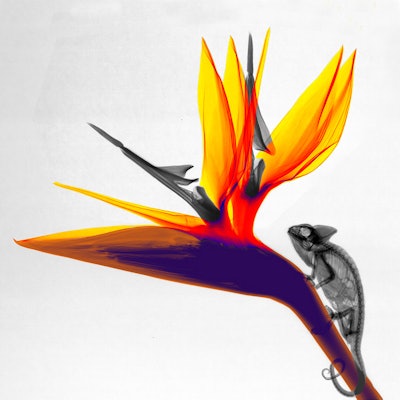 "Chameleon, strilizia." All images courtesy of Arie van 't Riet, PhD.
"Chameleon, strilizia." All images courtesy of Arie van 't Riet, PhD.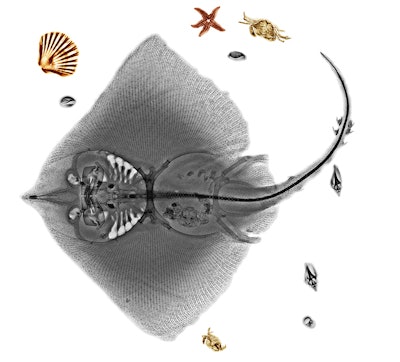 "Ray"
"Ray"After successfully scanning such a thin object, he decided to try something even thinner: flowers, he explained in a TEDxGroningen talk. He obtained an x-ray image, digitized it, inverted it, and added some color.
"And then, some people told me that's art -- and I became an artist," he joked in the presentation.
He spent some time on floral images but then began adding insects and eventually larger organisms, producing nature scenes with chickens, ducks, lizards, fish, and more. Obtaining specimens can be a bit of challenge; he uses animals killed in traffic, for example, or the small victims of a cat. He does not scan living animals for his artwork, he emphasized.
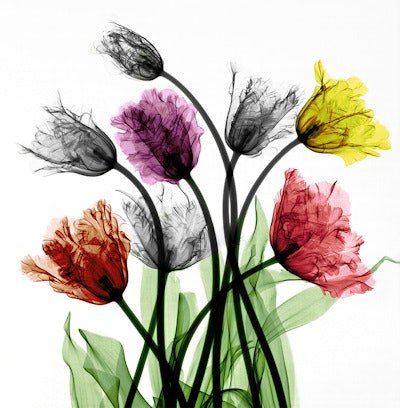 "French tulips"
"French tulips"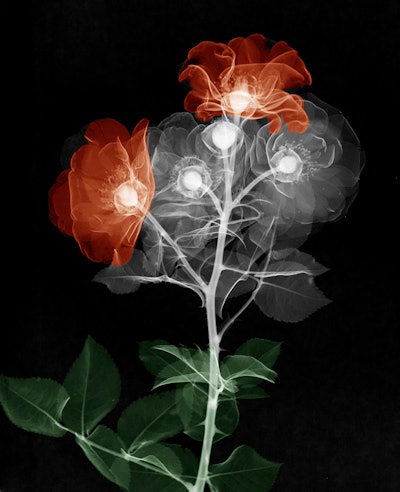 "Rosa Westerland"
"Rosa Westerland"All scans are performed in his studio using his own licensed x-ray equipment, he told AuntMinnie.com. He uses a Machlett x-ray tube and Enraf generator, at a maximum of 50 kVp and 15 mA. He also uses a Curix 60 processor (Agfa HealthCare) and VXR-16 digitizer (Vidar Systems), along with his own stock of out-of-production Kodak X-Omat V film. Photoshop is used to invert the images and add color.
To create an image, he organizes whatever plants and animals will be in the scene, and the composition is imaged as a whole, in one acquisition.
"Images are not layered," he said. "The complete natural scene of animals and plants is x-rayed in one shoot."
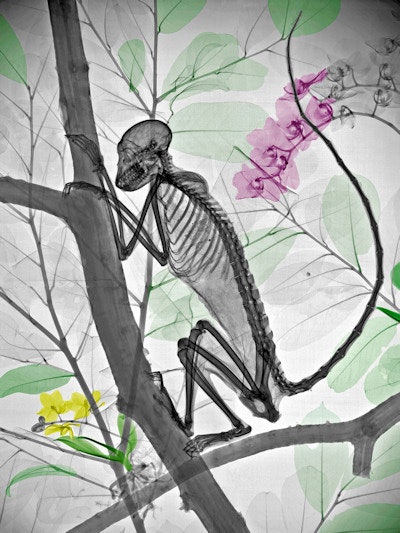 "Monkey (mummificated)"
"Monkey (mummificated)"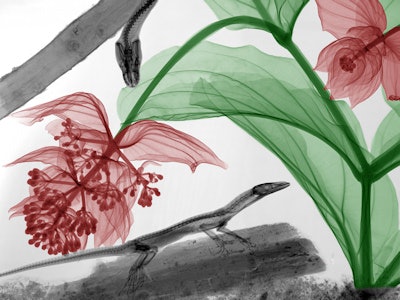 "Monitor lizard, snake, medinilla"
"Monitor lizard, snake, medinilla"One challenge with this method is choosing the right x-ray energies and intensities to image a thin leaf versus a thicker animal, for example. He sometimes uses filters to block certain parts of the composition, reducing the amount of radiation to thinner objects, while allowing greater intensity to reach a thicker part.
"In 'Frog waterlily,' the effect of a wedge [filter] in the x-ray beam was nicely demonstrated by the gray value gradient in the image," he noted.
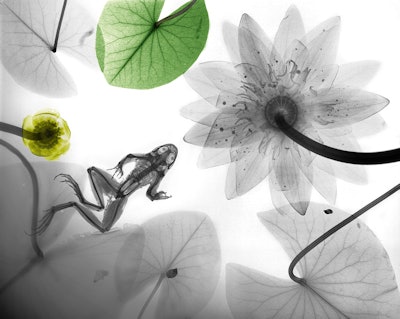 "Frog waterlily"
"Frog waterlily"Other favorite images include the scan of a ray, because of the way it depicts the wing and other structures, he said. The image of the monkey is also a favorite but was a challenge due to its size, requiring four films.
Van 't Riet said he hopes the images will underscore the beauty of nature and foster its appreciation.
After some work with 3D images, he is now investigating the use of contrast media in imaging flowers, in addition to searching for new animal subjects.
More images are available on his website, and his artwork will be in Booth 3965 in the South Hall at RSNA 2014 as part of this year's Centennial celebration.



